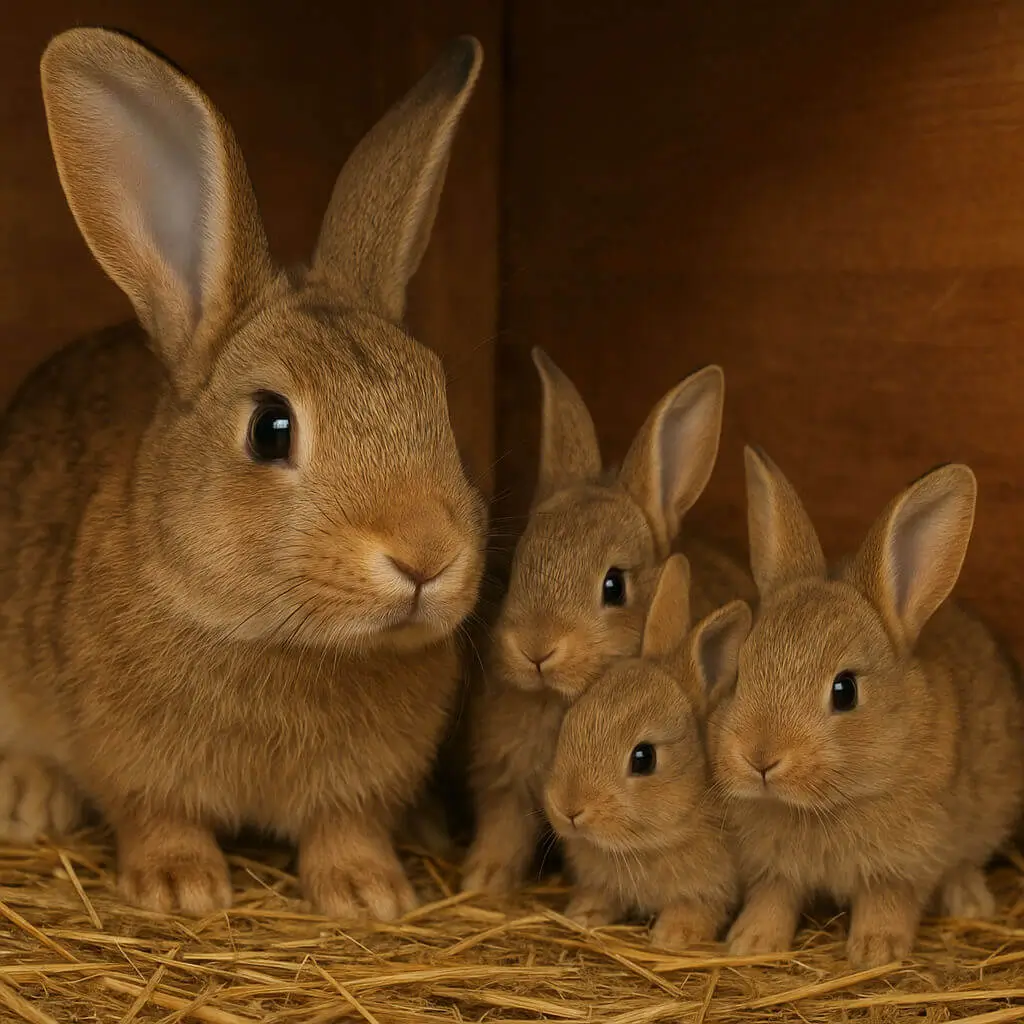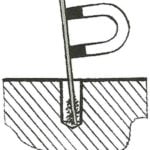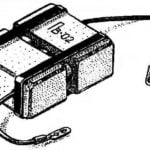The young naturalists of Cherkasy Secondary School No. 3 surely still remember the rabbit Belka, who gave birth to 96 kits in a year — three to five times more than usual. Belka’s offspring yielded nearly half a ton of meat, and the pelts were enough to make five children’s fur coats.
We offer three of the most common types of cages: individual ones (see Figs. 1 and 2) — for keeping adult rabbits, and group cages — for young rabbits, 10–12 animals per unit.
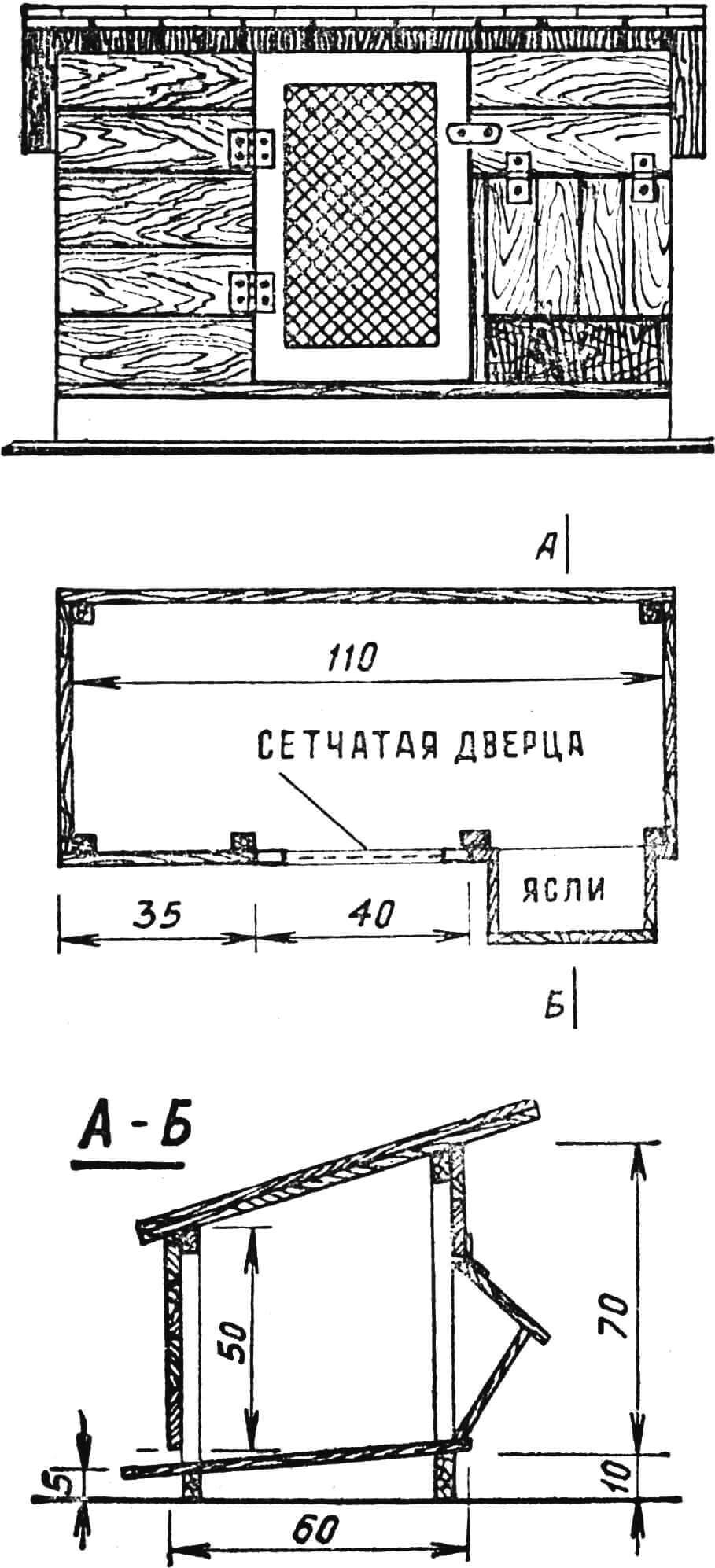
Individual portable cages (Fig. 1) are made of boards. The length of such a cage is 120 cm, width — 60 cm, front wall height — 70 cm, rear wall — 50 cm. If the cage doesn’t have a permanent nesting compartment, it has one door, measuring 70×40 cm, covered with mesh. The cage floor is raised 70 cm above ground level. It is better if the floor is made of mesh with a cell size no larger than 2.5 cm. In winter, it is advisable to cover the floor with boards or warm bedding. Next, external feeders are attached to the cage — each measuring 40×40 cm. They are covered on top with a slanted lid, and the inner side is fitted with a grid made of thick wire with several centimeters between bars.
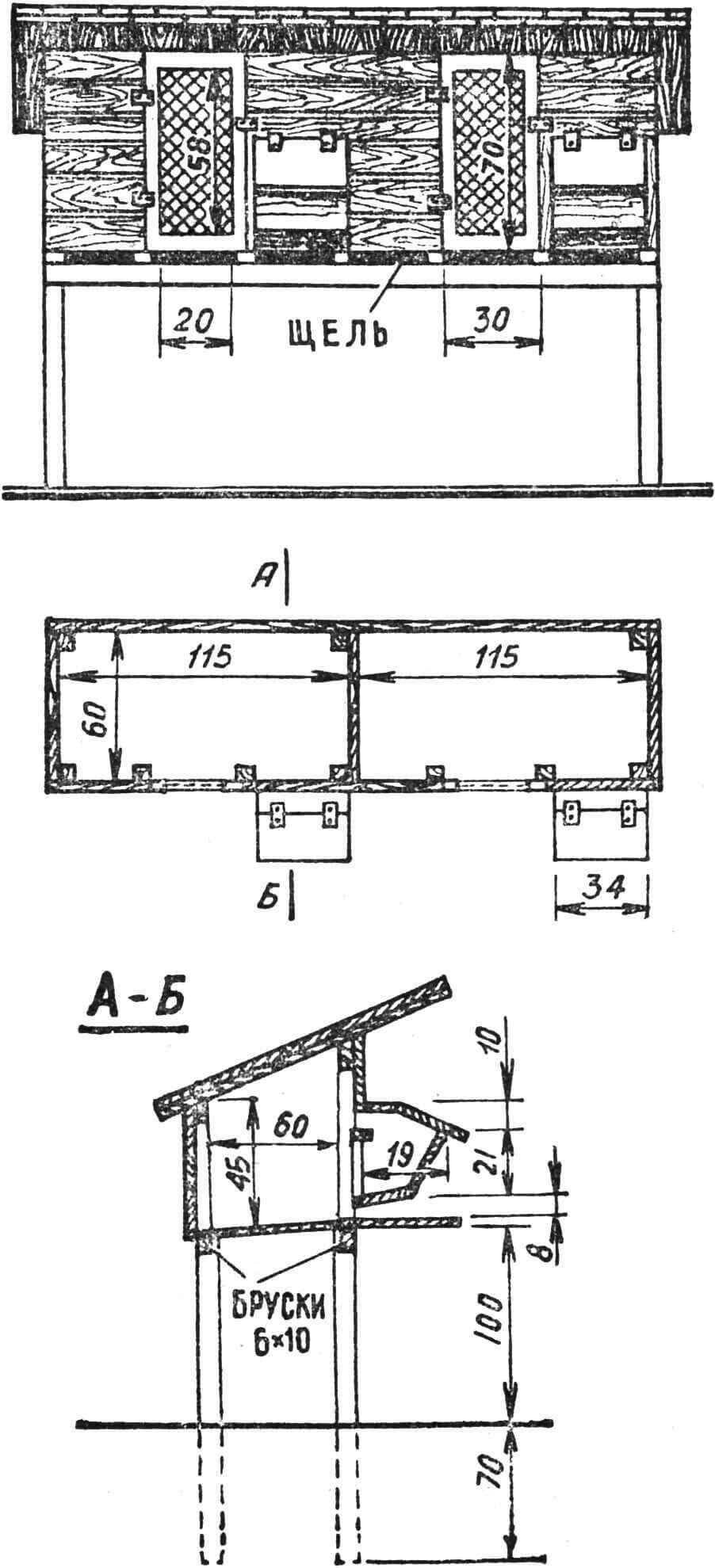
Group cages for young rabbits are made from the same material. The length of the cages is 2.5 meters, width — 1.5 meters, front wall height — 1 meter, rear wall — 80 cm. The door measures 80×60 cm. The floor is the same as in individual cages. The front wall and door are covered with mesh; the side and back walls are wooden.
Both group and individual cages are installed in blocks of several units. The partitions between them can be made of mesh.
In the central region and further north, experts recommend using portable cages so they can be quickly moved indoors during severe frosts.
E. Goncharov
